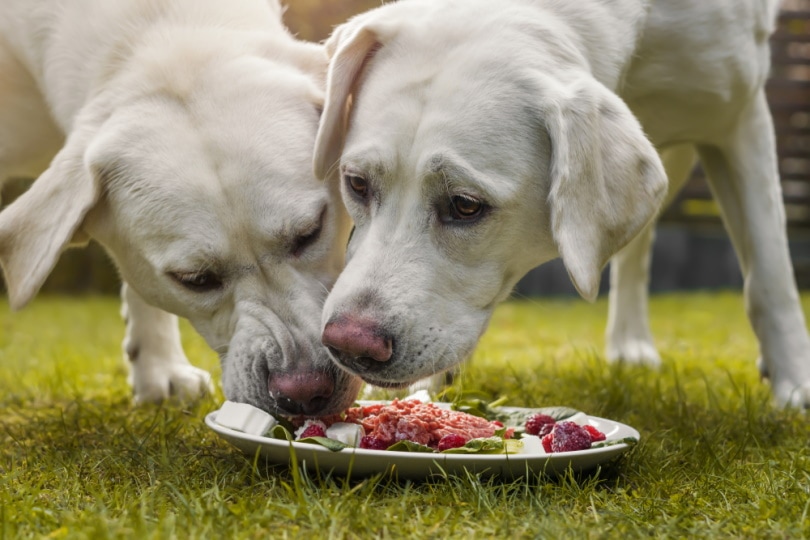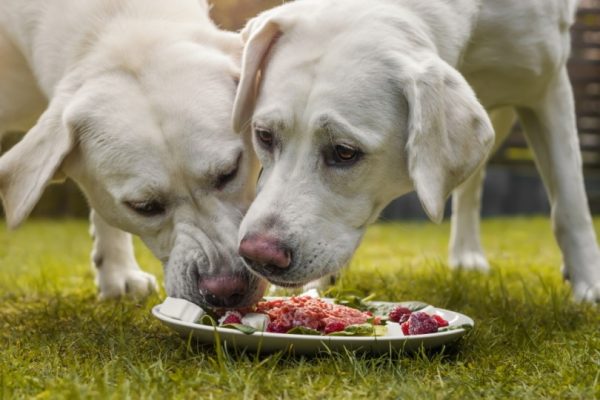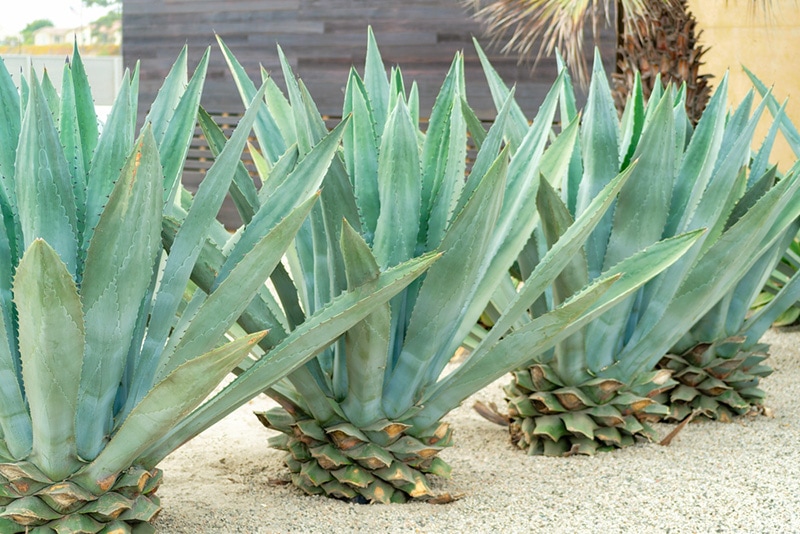Raw feeding is a controversial topic among vets, nutritionists, and dog lovers alike. Some support it as a more “natural” method of feeding, whereas others are concerned about the harmful bacteria and parasites that raw meat can contain. Here, we explore the pros and cons of a raw food diet and share how much raw food your dog should eat if you do decide to go the raw feeding route.
Is Raw Feeding Good for Dogs?
Experts are divided on this. Some, like Doug Kneuvan, DVM, claim that raw diets are better for dogs than processed foods because they’re closer to a dog’s natural diet1. Supporters have also claimed that their dogs have been more active and energetic and have had shinier coats since eating a raw diet.
Others, including Lisa M. Freeman, DVM, have warned pet parents against feeding a raw diet because of potential bacterial and parasitic infections that could affect both animals and humans2. She also states that while no study has shown that a raw diet is more beneficial, studies have brought attention to the dangers of raw feeding.
The PDSA brings up more issues with raw feeding, such as the concern that raw meat may contain bones or bone fragments, which can be dangerous to pets if swallowed3.
Can I Feed My Dog Raw Food?
Yes, you can feed raw food to your dog, but the PDSA urges pet owners to consult their vet before doing so or otherwise changing their dog’s diet in any way. After you’ve consulted your vet and have gotten the go-ahead to feed raw food to your dog, the PDSA recommends picking a commercially prepared raw diet instead of trying to make one at home yourself.
Commercial raw food has at least been prepared in facilities that have to satisfy certain hygiene standards. This helps reduce the risk of bacterial or parasitic contamination. Commercially-prepared raw food companies also have to prepare food that meets certain nutritional standards to ensure that the dog stays as healthy as possible.

How Much Raw Food Should I Feed My Dog?
If you’ve decided to go with a commercially prepared raw food diet, know that adult dogs should be fed 2–3% of their ideal body weight, and for puppies, it varies. Refer to the following feeding guides for more information, but be aware these may vary slightly depending on the food company that you choose. Check the guidelines of the company that you’re buying the raw food from for more specific information.
General Feeding Guide
Some companies produce weaning pastes for very young puppies aged between 3 and 6 weeks to help them gradually adjust to eating standard puppy food. As puppies and dogs come in all shapes and sizes, the amount you will feed them also depends upon factors like their activity level, size, and metabolism.
The amount that a dog is fed reduces as they get older. For example, a puppy aged between 7 and 10 weeks old will need to eat around 8–10% of their ideal body weight, whereas a puppy aged between 20 and 24 weeks will eat approximately 5–6% of their body weight. Puppies are usually fed between three and four small meals per day on average, and adult dogs usually eat two meals per day.
| Dog’s Age | Amount to Feed |
| 4–6 weeks | Feed to appetite |
| 7–10 weeks | 8–10% of ideal body weight |
| 10–16 weeks | 7–8% of ideal body weight |
| 16–20 weeks | 6–7% of ideal body weight |
| 20–24 weeks | 5–6% of ideal body weight |
| 24–36 weeks | 4–5% of ideal body weight |
| 36–56 weeks | 3–4% of ideal body weight |
| 56–68 weeks | 2.5–3.5% of ideal body weight |
| 68+ weeks (adult) | 2–3% of ideal body weight |
Feeding by Weight: Puppies
These charts give an estimation of how much raw food to feed puppies and dogs based on their weight. This can differ depending on factors like activity levels and if you want your dog to lose, maintain, or gain weight.
We urge you to refer to each raw food company’s individual feeding guide or use a feeding calculator to work out what would be the best amount to feed your puppy or dog. Speak to your vet if your dog is underweight or overweight to work out a meal plan that will suit them.
| Puppy’s Weight | Daily Feeding Recommendation (Grams) |
| 5 kg | 200–300 g |
| 10 kg | 400–600 g |
| 15 kg | 600–900 g |
| 20 kg | 800–1,200 g |
| 25 kg | 1,000–1,500 g |
| 30 kg | 1,200–1,800 g |
| 35 kg | 1,400–2,100 g |
| 40 kg | 1,600–2,400 g |

Feeding by Weight: Adult Dogs
| Dog’s Weight | Daily Feeding Recommendation (Grams) |
| 5 kg | 100–150 g |
| 10 kg | 200–300 g |
| 15 kg | 300–450 g |
| 20 kg | 400–600 g |
| 25 kg | 500–750 g |
| 30 kg | 600–900 g |
| 35 kg | 700–1,050 g |
| 40 kg | 800–1,200 g |
Final Thoughts
If you’re a proponent of raw feeding and are determined to make it work for your dog, we recommend following the PDSA’s advice to talk things through with a vet first to determine what would work best for your dog and how much raw food you should give them.
The numbers here are just standard estimates and will need to be adjusted based on your dog’s weight, weight goals, activity levels, and any health issues they may have, which is why it’s so important to get an expert opinion before starting your dog on a new diet. You can also reach out to commercial raw food companies to get advice; some companies’ websites even have a live chat tool that you can use to get info quickly and efficiently.
- See also: Can Dogs Eat Raw Chicken?
Featured Image Credit: manushot, Shutterstock












